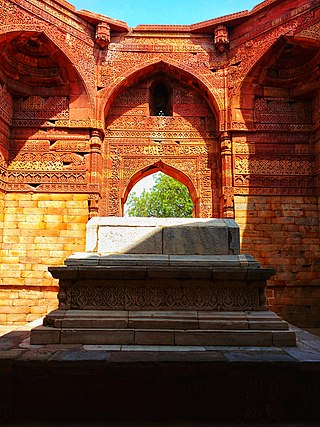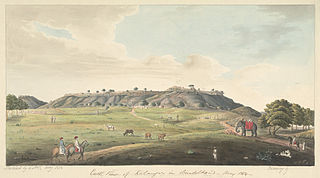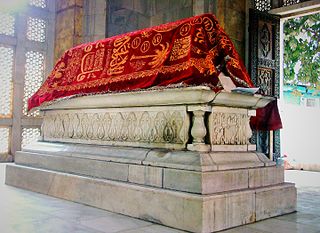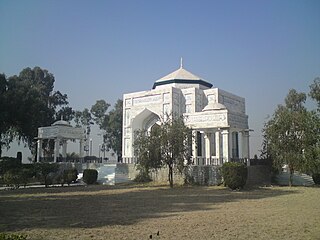Related Research Articles

Yamīn-ud-Dawla Abul-Qāṣim Maḥmūd ibn Sebüktegīn, usually known as Mahmud of Ghazni or Mahmud Ghaznavi, was the founder of the Ghaznavid dynasty, ruling from 998 to 1030. At the time of his death, his kingdom had been transformed into an extensive military empire, which extended from northwestern Iran proper to the Punjab in the Indian subcontinent, Khwarazm in Transoxiana, and Makran.

The Gurjara-Pratihara was a dynasty that ruled much of Northern India from the mid-8th to the 11th century. They ruled first at Ujjain and later at Kannauj.

The Pandyan dynasty, also referred to as the Pandyas of Madurai, was an ancient Tamil dynasty of South India, and among the three great kingdoms of Tamilakam, the other two being the Cholas and the Cheras. Existing since at least the 4th to 3rd centuries BCE, the dynasty passed through two periods of imperial dominance, the 6th to 10th centuries CE, and under the 'Later Pandyas'. The Pandyas ruled extensive territories, at times including regions of present-day South India and northern Sri Lanka through vassal states subject to Madurai.

Shams ud-Din Iltutmish was the third of the Mamluk kings who ruled the former Ghurid territories in northern India. He was the first Muslim sovereign to rule from Delhi, and is thus considered the effective founder of the Delhi Sultanate.

Kalinjar is a fortress-city in Bundelkhand, in Banda district of Uttar Pradesh, in India. It was ruled by several dynasties including the Guptas, the Vardhana Dynasty, the Chandelas, Solankis of Rewa, Mughal and the Marathas.

Qutb ud-Din Aibak, was a Turkic general of the Ghurid king Muhammad Ghori. He was in charge of the Ghurid territories in northern India, and after Muhammad Ghori's assassination in 1206, he established the Delhi Sultanate (1206–1526), and started the Mamluk dynasty, which would rule the Sultanate until 1290.
Tomar is a clan, some members of which ruled parts of North India at different times. People belonging to the Tomara clan are found among the Rajputs, Jats and Gurjarsof Northern India.

Prithviraja III, popularly known as Prithviraj Chauhan or Rai Pithora, was a king from the Chauhan (Chahamana) dynasty who ruled the territory of Sapadalaksha, with his capital at Ajmer in present-day Rajasthan. Ascending the throne as a minor in 1177 CE, Prithviraj inherited a kingdom which stretched from Thanesar in the north to Jahazpur (Mewar) in the south, which he aimed to expand by military actions against neighbouring kingdoms, most notably defeating the Chandelas.

The Chandelas of Jejakabhukti was an Indian dynasty in Central India. The Chandelas ruled much of the Bundelkhand region between the 9th and the 13th centuries. They belonged to the Chandel clan of the Rajputs.

Nasir ud din Mahmud Shah was the eighth sultan of the Mamluk Sultanate. The Tabaqat-i Nasiri, written by the court historian Minhaj-i-Siraj, is dedicated to him. His father-in-law Ghiyas ud din Balban handled the state affairs during his reign.
Nasir-ud-Din Qabacha or Kaba-cha was the governor of Multan, appointed by the Ghurid ruler Muhammad Ghori in 1203.

The Tomara dynasty dynasty ruled parts of present-day Delhi and Haryana in India during 8th-12th century. Their rule over this region is attested to by multiple inscriptions and coins. In addition, much of the information about them comes from medieval bardic legends. They belonged to the Tomar clan of the Rajputs. They were displaced by the Chahamanas of Shakambhari in the 12th century, who took over their capital in Delhi, but who were themselves soon displaced by the Ghurid ruler Muhammad of Ghor in 1192 CE.
Dhanga, also known as Dhaṇgadeva in inscriptions, was a king of the Chandela dynasty of India. He ruled in the Jejakabhukti region. Dhanga established the sovereignty of the Chandelas, who had served as vassals to the Pratiharas until his reign. He is also notable for having commissioned magnificent temples at Khajuraho, including the Vishvanatha temple.
Hammira-Varman was a Hindu Rajput king of Chandela dynasty of central India. He ruled from Kalinjar, Jejakabhukti (Bundelkhand),. During his reign, the Delhi Sultan Alauddin Khalji was only able to conquered some parts of the Chandela Kingdom
Rahila was a king of the Chandela dynasty of India. He ruled in the Jejakabhukti region.
Kirttivarman, also known as Kīrtivarman, was a king of the Chandela dynasty of India. He ruled the Jejakabhukti region. He revived the Chandela power by defeating the Kalachuri king Lakshmi-Karna.
Paramardi was a king of the Chandela dynasty of central India. He was the last powerful Chandela king, and ruled the Jejakabhukti region. Around 1182–83 CE, he was defeated by Prithviraj Chauhan, who raided the Chandela capital Mahoba. Paramardi managed to recover the Chandela power over the next few years, but was defeated by the Ghurid general Qutb ud-Din Aibak around 1202–03 CE.
Trailokya-Varman was a king of the Chandela dynasty of central India. He ruled the Jejakabhukti, Kanyakubja, Tripuri and Chedi regions in present-day Madhya Pradesh and Uttar Pradesh).
The Yajvapala dynasty ruled parts of central India during the 13th century CE. Their capital was located at Nalapura. They are also known as Jajapella or Jajpella. The Yajvapalas carved out a kingdom in northern Madhya Pradesh during the first half of the 13th century, and successfully resisted invasions by the Chandelas and the Delhi Sultanate over the next few decades. It is not certain how their rule ended, but they probably fell to the Delhi Sultanate by the end of the century.

The Indian campaigns of Muhammad of Ghor were a series of invasions by the Ghurid ruler Muhammad of Ghor (c.1173-1206) in the last quarter of the twelfth and early decade of the thirteenth century which lead to the widespread expansion of the Ghurid empire in the Indian subcontinent.
References
- ↑ Mehta 1986 , p. 94
- ↑ K. A. Nizami 1992, p. 201.
- 1 2 Romila Thapar 2013, p. 572.